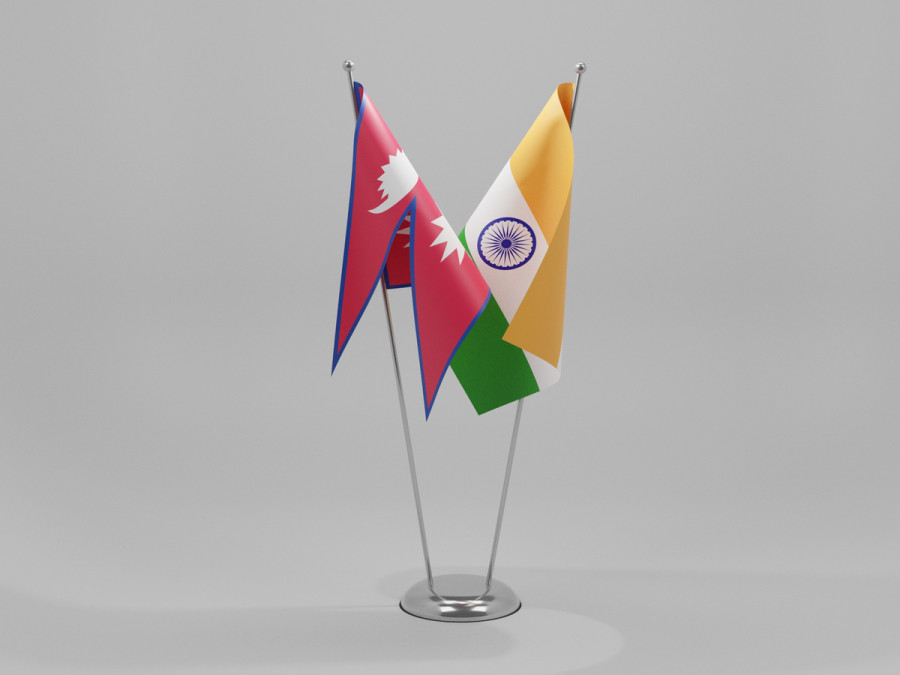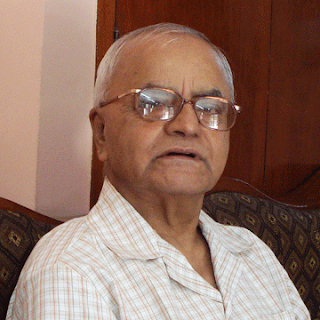Columns
Nepal-India ties: Expectations and reality
It is imperative that the two sort out their problems to reduce other geo-political tensions.
Lok Raj Baral
The much-hyped Sixth Joint Commission Meeting held recently in New Delhi has unravelled some indications in the present context of Nepal-India relations. First, the meeting was significant in normalising relations that had stalled since the map dispute came to the fore following the publication of their respective maps by both India and Nepal. Both countries’ maps claim Kalapani, Lipulekh and Limpiyadhura as their territories. The road inauguration by Indian Defence Minister Rajnath Singh last year provoked the Nepali side to come up with a new map that included the territory east of the Kali River as per Article 5 of the 1816 Sugauli Treaty. Making it the main agenda for the joint meeting, Nepal wanted to engage India in fully addressing this issue despite the southern neighbour's ‘stated position’ on the disputed territory. It seemed that the Nepali side raised the issue at the meeting as well as during one-on-one talks with the Indian minister of external affairs, but the Indian side avoided the subject maintaining that it would be sent to the appropriate committee set up for addressing specific issues.
India was unwilling to hold talks on this particular border issue unless the Oli government withdrew its map that incorporated 'Indian territory' which it called an 'artificial enlargement' of the border. Since the purpose of the visit was highlighted by no other person than Prime Minister KP Oli himself assuring the Nepali people that his government would take back the territory included in the new map, the outcome of the visit seemed to be confined to the 1 million doses of anti-Covid-19 vaccines provided by India as a grant. So the visit was not up to Nepali expectations. An Indian national daily The Statesman wrote in its January 20 edition, '...the boundary talks with the government in Kathmandu are unlikely until it amends the Oli government’s unilateral initiative to incorporate areas that India claims as its own'.
Mending fences
Second, why did India virtually ‘snub’ Foreign Minister Pradeep Gyawali by not allowing him to call on Prime Minister Narendra Modi during his visit to Delhi? Many argue that though the visit was a start in mending fences in bilateral relations, it was undertaken at a time when the politics of the country was once again on the way to instability due to the sudden dissolution of the House of Representatives by Prime Minister Oli without any valid constitutional and political grounds. As Oli was facing an intra-party conflict heightened by his own party colleagues who commanded majority support in all wings of the newly integrated Nepal Communist Party, he found no other escape route but the dissolution of Parliament on the pretext of getting a fresh public mandate through elections slated for April and May 2021.
It was assumed that one of the reasons for Modi not allowing Gyawali to pay even a courtesy call was to keep distance between Oli and his adversaries opposing his dissolution move. However, such arguments do not hold much ground as a courtesy call would not have made a difference except that the Oli camp could have claimed it as a diplomatic victory. However, it can be stated that Gyawali’s failure to meet the Indian prime minister did not mean a failure of his visit because his meeting with Rajnath Singh, minister of defence and second in hierarchy in the Modi cabinet, cannot be undermined. Gyawali’s inability to meet Modi cannot be considered a failure as such incidents are not applied to India alone. Chinese President Xi Jinping also did not receive Nepal’s deputy prime minister and defence minister during his visit to Beijing.
Third, the issue of the Report of the Eminent Person Group (EPG) and India’s unwillingness to accept it has been prominently figuring in Nepal’s agenda. Prime Minister Oli himself raised it during his visit to India. Yet, it is surprising why the report prepared unanimously by the joint team was not accepted by India. The Modi government seems to have developed second thoughts about it as it presumably didn’t come up to its expectations in recommendations. If that is the case, why should Nepal be insistent on making the EPG report the principal item on the agenda of Indo-Nepal relations? If the two sides agree, other bilateral channels can also be used to settle outstanding issues that are impinging on bilateral relations.
Finally, India-Nepal relations cannot be seen in isolation. The emergence of China as a potential world power and its impact on India-Nepal relations and on changing the geopolitical environment can be a good area of study based on objectivity. The China factor is likely to be a major focus of international politics not because of the declining trends of American power that reduces the manoeuvrability of other powers such as India, which is still behind China in showing its capacity to balance it, but also because of increased Chinese strategic assertiveness in its neighbourhood.
Cooperative relationship
It is assumed that Chinese hegemony can be strongly resisted by the combined efforts of the West and other Indo- Pacific powers, depending on the extent to which America becomes assertive vis-à-vis China. If the new Biden administration makes a slight departure in its China policy from the previous Trump administration, the prospects of a cooperative relationship are likely to be better. The Biden administration should follow a persuasive course for helping develop a cooperative relationship between India and China. Such an atmospheric change is necessary in order to create conducive conditions for peace and progress.
In this context, an amicable settlement of all outstanding problems between India and Nepal, and India and China becomes significant in view of the emergent geopolitical dynamics in South Asia. Situated between China and India, Nepal, notwithstanding its limited capacity for power play, occupies a tiny but sensitive zone of international politics given the increasing Chinese presence in the region. So any further lingering of bilateral disputes, especially those related to the border, is likely to be more complex as well as complicated in course of time. It is, therefore, imperative that India and Nepal sort out their outstanding problems, especially those relating to the new maps, to reduce other geopolitical tensions or even to minimise the role of external powers.




 8.12°C Kathmandu
8.12°C Kathmandu













%20(1).jpg&w=300&height=200)

